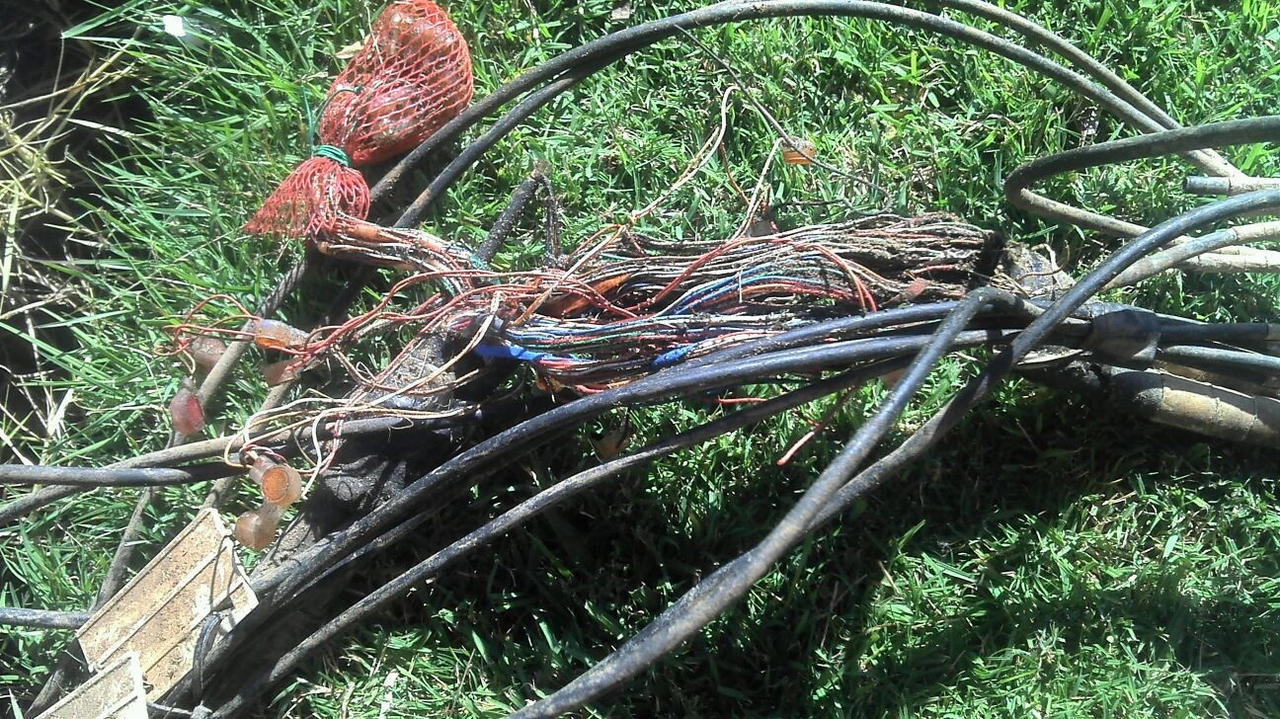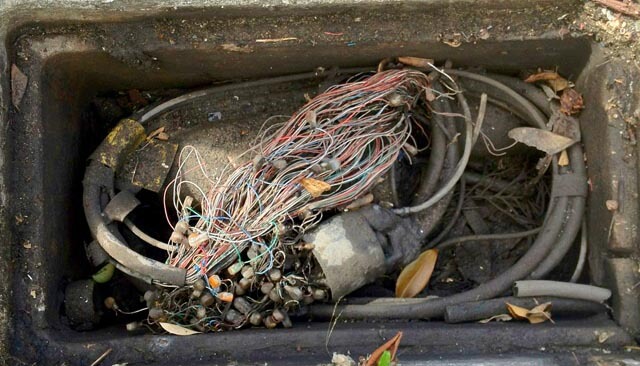
Are You Having Internet Issues?
Telstra Complaints: Unravelling the Truth About Network Faults
“Telstra said it’s my internal wiring, but the fault was actually in their network.”
In recent years, there’s been a notable increase in jobs we’ve tackled for clients where the fault, initially attributed to internal wiring by Telstra, was ultimately found in the Telstra Network. A significant 60% of these cases resulted in Telstra complaints, where customers were mistakenly informed that the issue lay within their own premises.
Typically, if the fault is within the network, a simple call to Telstra or the respective ISP should dispatch a technician to rectify the problem. However, if Telstra’s initial assessment points to an internal wiring fault, customers are compelled to hire private telephone technicians. To their dismay, many later discover that the real issue is with the network, leaving them with both an unresolved fault and an invoice from the technician.
The aftermath? A challenging endeavour to persuade the ISP to send another Telstra technician, which might take up to a fortnight. If, during this period, the fault mysteriously resolves – possibly due to drying cables post-rain – customers risk being charged an incorrect callout fee. For Telstra clients, this fee starts at $130.00 inc GST for the initial 15 minutes and $38.00 inc GST for every subsequent quarter-hour. Other ISPs might levy even heftier fees, reaching around $220.00 inc GST. Given these circumstances, the surge in Telstra complaints concerning their contractors and service quality is hardly surprising.
Why Do These Issues Arise?
The root causes of such mix-ups remain elusive. From our observations, it seems to be a blend of contractors neglecting Telstra protocols, a deteriorating network infrastructure, technicians not thoroughly inspecting the network’s end (NBP), and a few technicians aiming to expedite their daily tasks for increased earnings.
Telstra mandates a comprehensive set of guidelines for both its full-time technicians and contractors. These are designed to ensure that faults are addressed effectively while safeguarding Telstra’s interests.
Lead-in Cables and FAST Tests
A recurring theme in many cases is Telstra’s diagnosis of an internal fault without the technician actually inspecting the customer’s property. This oversight might be a primary contributor to the confusion. To confirm the fault’s location, a technician should obtain a satisfactory FAST TEST, which measures the network up to the end of the lead-in cable, originating either from the Telstra joint in a pit or a street pole.

Understanding the FAST Test
What is a FAST Test?
A FAST test is an automated procedure used by technicians to diagnose line issues. It can be conducted using a specialised phone known as a ‘Buttinski’ or even through mobile phones. Technicians connect to this service by dialling a specific number, entering their contractor ID, and selecting the ‘Sultan’ test. They then input the FNN (Full National Number) – essentially the complete phone number, including the area code. The system promptly returns results indicating whether the line is ‘within specification’ or ‘outside specification’ and provides detailed findings.
If customers aren’t present during the technician’s visit, a FAST TEST can still be performed from the lead-in joint outside their residence. However, if they are home, technicians should ideally extend the test to the end of the Lead-in cable – this could be the primary socket in a residence or the A side of the MDF in commercial spaces.
Why Some Technicians Avoid Extensive Testing
Many technicians tend to avoid testing up to the end of the lead-in cable. Given that some of these cables might have been underground for 50-60 years, they’re prone to wear and tear, often being the source of many faults. Instead of a thorough test, some technicians might choose to conduct a FAST TEST only up to the joint outside the premises, leaving a note for homeowners suggesting they weren’t present.
Closing a job requires a successful FAST test. If the automated system fails, technicians have an alternative: they can contact a special Telstra department called ‘Testers’, who will manually run a similar test. If the line meets the specified criteria, the technician can then close the job.
The Economics of Telstra Contracting
Telstra contractors are paid per fault they address, regardless of the time spent. In Sydney, the rate ranges between $70 to $80. If a fault is traced to the lead-in cable, it often translates into more work for the technician. They’re required to provide the cable, further digging into their potential earnings. The process of replacing or repairing this cable can be tedious, especially if it involves liaising with Telstra’s Lead-in hand-off team or securing permissions.
When faults involve aerial cables, technicians face additional challenges. Replacing these cables demands more time, limiting the technician’s ability to address simpler faults on the same day, thereby affecting their earnings.
Over the years, the compensation for Telstra contractors has been dwindling, while their workload has been increasing. During the late nineties, after Telstra’s privatisation, the payment system was more equitable. Now, irrespective of the number of faults a technician fixes to achieve a successful FAST test, they’re paid just once.
Technicians are also at risk of penalties through ‘Re-Works’. If a customer reports a fault within 14 days of a job’s closure, the technician might face restrictions on the number of daily assignments and other penalties, impacting their income. This policy applies even if the subsequent fault isn’t related to their initial work.
In conclusion, while the FAST test is a crucial tool for diagnosing and addressing network issues, the underlying system and policies can sometimes hinder technicians from delivering optimal service, leading to frustrations among both technicians and customers.
CAN 2000 Project and the Issue with Gel Joints
The Genesis of the CAN 2000 Project
In the late 1990s, with the privatisation of Telstra, the network underwent a significant upgrade. Contracting companies were primarily responsible for this overhaul. Working for a company named E.R.G at the time, I supervised about ten contractor teams in regions spanning Sydney, Blue Mountains, and the Central Coast. Our tasks included replacing old asbestos pits with PVC ones, upgrading deteriorating network and lead-in cables, and encapsulating new joints.
Encapsulation: A Double-Edged Sword
Encapsulation was introduced as a means to keep moisture out of the network. Once a Telstra joint was reconstructed, it was encapsulated by mixing two chemicals, which, after setting for 24 hours, encased all the cables within the joint in a gel substance.
However, this decision soon manifested its drawbacks. If a technician needed to access the joint for any reason – be it a new cable addition, installation, or fault detection – they would have to navigate through this gel. Given its novelty, many only removed a minimal amount of gel necessary for their task and re-sealed the joint. The Australian heat played havoc with these joints, transforming the gel into a milky substance, inducing electrolysis and compromising cable insulation. This phenomenon led to what’s known as foreign battery faults.
Foreign Battery Faults: A Technician’s Nightmare
A foreign battery fault arises when a cable absorbs extra voltage from an external source, with most such faults attributable to gel-affected joints. If a technician diagnosed a fault as a foreign battery fault, they faced the daunting task of examining every cable pair in the joint, searching for those with less than 5 volts’ battery on both the A and B pairs. Failing to find such a pair meant the job wouldn’t pass a FAST test.
The technician then had two choices:
- Create a CNI (Customer Network Improvement): This involved liaising with the CNI team within Telstra, dedicated to addressing network cable issues and other infrastructural challenges. This process was time-consuming, often requiring an hour to provide extensive details and get a CNI number to close the job. CNI-designated cables and joints were marked for future reference, and over time, some cable runs accumulated multiple CNI-designated joints or faulty segments.
- Cut under the joint and make a bag joint.
The Unfair Blame on Technicians
The crux of the issue lies in the fact that Telstra’s earlier decision to encapsulate joints, which led to the gel problem, now resulted in technicians bearing the brunt of the consequences. They risked penalties for issues that weren’t their doing. Even if they addressed one problem in a cable, other lurking issues in the same range could manifest, leading to more penalties. Some of these problematic joints remained in the network for years after being initially reported, explaining the abundance of Telstra complaints.
In conclusion, while the CAN 2000 project aimed to enhance the Telstra network, certain decisions, like encapsulation, had unintended repercussions. The technicians, unfortunately, found themselves navigating the challenges and bearing the blame for a situation not of their making.
Bag Joints & Cutting Under Cables in the Telstra Network
Understanding Bag Joints and Cutting Under Cables
In situations where gel-affected joints impede network functionality, technicians sometimes resort to cutting under the joint to restore service. Most joints typically have two O-pair cables inserted: one marked with red tape indicating the exchange side of the cable running back towards the telephone exchange, and the other continuing to connect subsequent houses down the line.
By making a cut below the joint, technicians can expose the pairs inside the cable affected by the gel. They then make a connection under the joint, effectively bypassing the gel-affected common and restoring service to the customer.
The Consequences of Cut-Under Joints
Whilst this method might seem effective in the short term, it introduces a fresh set of challenges. The exposed cables are now susceptible to moisture. Technicians are expected to encase these cut-under joints in bags, attempting to make them as waterproof as possible. However, these bags are inherently porous, making them an unreliable solution against moisture infiltration.
Furthermore, the Telstra pits, designed to be self-draining, often fail to function as intended. Over time, dirt and silt build-up block the draining systems, leading to water accumulation in the pits, especially during rains. The bag joints then become waterlogged, creating yet another problem in the network.
The Volatility of Gel Joints and Cables
Due to the presence of gel joints and cables, network issues can be transient, appearing and disappearing based on various factors such as weather conditions, humidity, and heat. This volatility can be problematic, as by the time a technician arrives – sometimes weeks later – the issue might have self-resolved. This can lead them to incorrectly attribute the problem to internal wiring, prompting homeowners to seek external assistance.
Navigating Network Faults: What Should You Do?
If a Telstra technician or contractor has visited and attributed the fault to your internal wiring, your next step would be to engage a private company specialising in phone line repairs. Ensure that the technician is ACMA approved with an open Austel Licence. General electricians might not be the best fit due to the specialised nature of fault-finding in this domain.
Our approach is comprehensive. Whilst we check for internal faults, we prioritise examining the Telstra side of the cable to pinpoint the root cause. Unlike other service providers in Sydney, our aim is not just to fix the issue but to provide evidence, should the fault lie within the Telstra network. We believe in equipping our clients with a detailed report, test results, and, uniquely, a video report offering visual and audio proof of our findings. This evidence has enabled 95% of our clients to secure full refunds or account credits for our services when the fault is found to be within the Telstra network. In such cases, our service essentially becomes cost-free for our clients.
Dealing with ISP Issues: Understanding the Role of Telstra
Does My ISP Choice Affect the Network Infrastructure?
Even if you’re subscribed to an Internet Service Provider (ISP) other than Telstra, it’s essential to note that Telstra predominantly owns the underlying infrastructure and network. This includes renowned ISPs such as TPG, Optus, Exetel, IINet, Spintel, Belong, Dodo, and countless others. They all rely on the Telstra network for service provision. Thus, when you report a fault with your chosen ISP, they usually forward the concern to Telstra. Following this, a Telstra technician or an affiliated contractor will address the issue.
Optus does possess a distinct network, primarily a cable network utilising Coax cable. However, for those with DSL, ADSL, or a standard pots line, their connection remains tethered to the Telstra network.
Lodging Telstra Complaints
If you find yourself grappling with issues linked to Telstra, there’s a dedicated complaints section on the Telstra website, accessible via the button below. We aim for this article to be both enlightening and beneficial to our readers. We encourage feedback and discussions on our Facebook Page, where this post will also be shared. Kindly leave your comments and engage with our content for more enlightening insights in the future.
Update as of 21/12/2022:
The telecommunications landscape has evolved significantly since the inception of this article. Presently, NBN has emerged as the leading wholesaler, while Telstra has transitioned into a more retail-centric role. We’re proud to highlight our highly-skilled NBN Technician, equipped to assist with any communication challenges you might face.

Jason Kearney
Head Internet Technician
Jason Kearney is the Head Technician at SECURE A COM, with qualifications spanning NBN, ADSL, phone, and data cabling. Starting as an electrician, Jason quickly delved into the telecommunications sector, leading crucial projects like the rehabilitation of the Telstra network. With credentials in both managerial and technical aspects, he now specialises in phone line and NBN fault location and repair, serving both homes and businesses with effective and personalised telecommunications solutions



